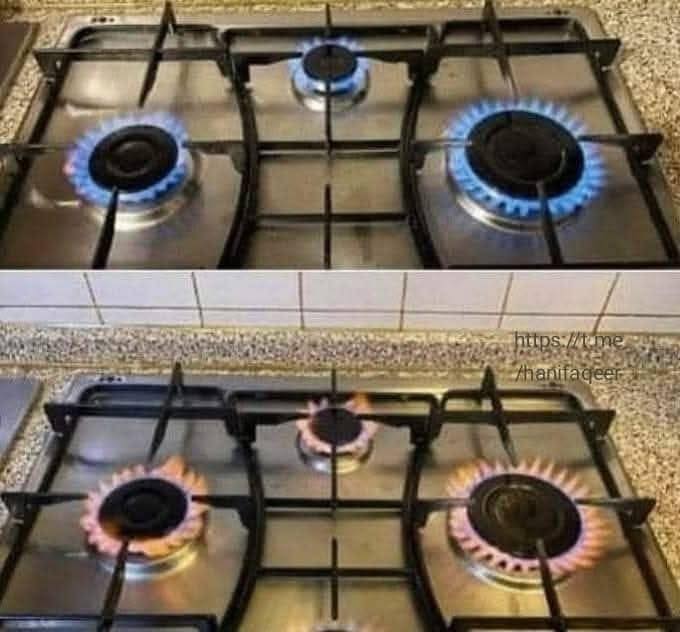ADVERTISEMENT
🔍 Causes of Incomplete Combustion
Blocked Fuel Passages or Ventilation Systems: Dust, grease, or debris can clog burners or vents, disrupting airflow.
Improperly Installed Stove: Misaligned burners or incorrect gas connections can lead to uneven burning.
Dirty Gas Stove: Rust, soot, scale, or dust buildup prevents efficient combustion.
Insufficient Cylinder Pressure: Low gas pressure (common in propane cylinders) can cause weak or uneven flames.
🛠️ How to Fix and Prevent Red/Orange Flames
Check and Clean Burners:
Turn off the gas supply and let the stove cool.
Remove burner grates and caps. Soak in warm, soapy water, then scrub with a non-abrasive sponge.
Clear burner holes with a toothpick or compressed air to remove blockages.
Tip: Clean burners monthly to prevent buildup.
Inspect Ventilation:
Ensure stove vents and surrounding areas are free of grease or debris.
Check that kitchen ventilation (range hood or windows) is adequate.
Tip: Run your range hood or open a window while cooking to improve airflow.
Verify Installation:
Ensure the stove is level and burners are properly seated.
If using propane, check that the regulator and gas line are correctly installed.
Tip: Consult a professional if you suspect installation issues.
Monitor Cylinder Pressure:
For propane stoves, check the cylinder gauge (if available) or weigh the tank to ensure it’s not low.
Replace or refill the cylinder if pressure is insufficient.
Tip: Keep a spare cylinder to avoid interruptions.
Test the Flame:
After cleaning or adjustments, light the burner and check for a steady blue flame.
If the flame is still red/orange, contact a technician to inspect for gas leaks or burner damage.
SEE NEXT PAGE
ADVERTISEMENT
